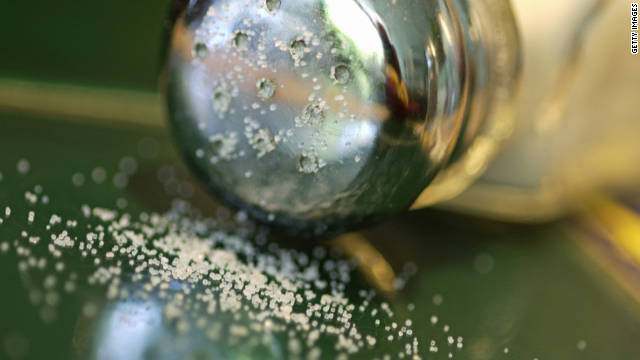FDA Reduces Sodium Guidelines in Food, Is It Enough?
0:50
(CNN Spanish) -
Consuming too much salt is linked to high blood pressure, heart disease and high mortality.
Now how much salt is too much salt?
Let's talk in terms of sodium, which is how it is measured by doctors and health authorities.
Sodium is hidden in foods you wouldn't think of, like salad dressings, dips, chicken breasts, canned vegetables, and more.
The U.S. Food and Drug Administration (FDA) said it will lower its sodium content goals in processed, packaged, and prepared foods, but not to recommended levels to reduce risk. of heart attack and stroke.
According to the American Heart Association, for our bodies to function they need only a small amount of sodium, less than 500 milligrams per day.
That's roughly the sodium of half a cup of chicken broth.
But most people in the U.S. consume about seven times that: more than 3,400 milligrams of sodium a day, the equivalent of more than 1.5 teaspoons of salt per day, or the amount in nearly four tablespoons of salt. normal soy sauce.
advertising
The FDA recommended daily limit is 2,300 milligrams.
More than 70% of the sodium Americans consume comes from what the food industry has added to products that are later purchased in stores or restaurants, according to the FDA.
Reducing the amount of salt you eat could give you more years to live.
Olive oil would reduce the risk of diseases 0:55
How to control and reduce your salt intake?
Here we share five tips
1. Check the nutrition labels
In addition to salt, the label might use terms like monosodium glutamate (MSG, common in Chinese food), sodium citrate, sodium alginate, and sodium phosphate.
2. Become familiar with what foods or condiments are common sources of salt.
Foods with the highest levels of salt include breads and rolls, pizza, sandwiches, deli meats and deli meats, soups, burritos and tacos, savory snacks like French fries, popcorn and crackers, chicken, cheese, and tortillas.
3. Stop using the salt shaker
That helps, even if most of your sodium intake comes from processed foods.
4. Request nutritional information
If you are in a restaurant, ask about the foods you want to eat and try to avoid main dishes with excess sodium.
5. Avoid eating out
Eat more minimally processed foods at home by eating more fresh and frozen fruits and vegetables.
This article was produced with reports from Sandee LaMotte, Lisa Drayer and Virginia Langmaid
Nutritious food









